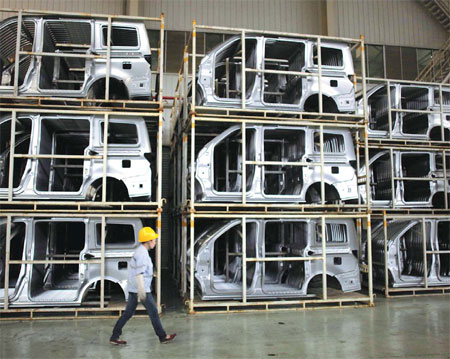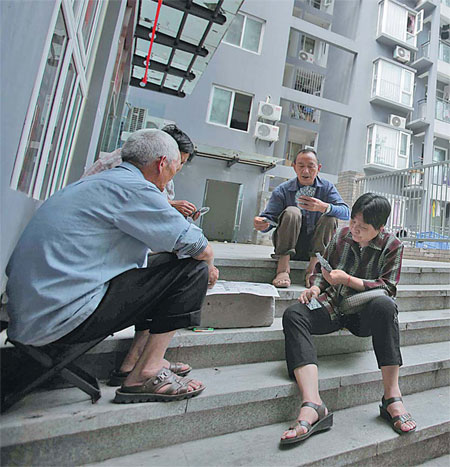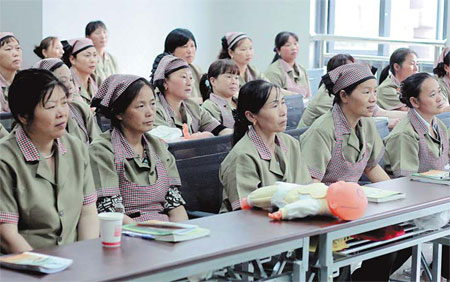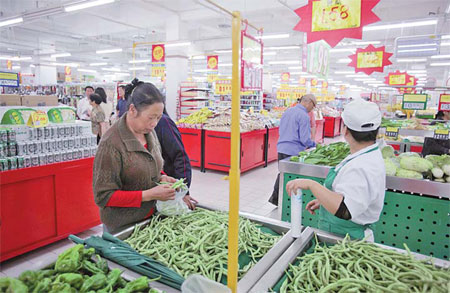Showtime for modern Chongqing
Updated: 2013-06-07 07:11
By Wang Hao, Tan Yingzi and Wei Tian (China Daily)
|
||||||||
|
Vehicle shells in storage at the workshop of Changan Automobile Company in Liangjiang New Area in Chongqing. Photos by Wang Jing / China Daily |
|
Residents play cards in a newly built residential community in Chongqing's Yubei district. Wang Jing / China Daily |
|
Former farmers attend a course on baby care, part of a 'Urban Skills School' program, initiated by the administrative committee of Chongqing Liangjiang New Area. |
|
Zhang Junbi, 65, in her new home in Minxinjiayuan community in Chongqing. |
|
Residents of Hehe community shop in a newly opened supermarket in the neighborhood. |
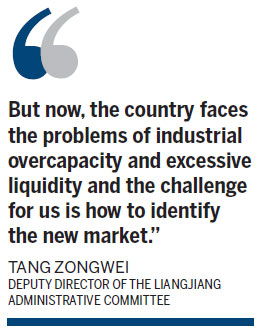
China's economic focus is shifting from east to west, Wang Hao, Tan Yingzi and Wei Tian report from Chongqing.
On a map, the narrow Yuzhong Peninsula, bounded by the Jialing River to the north and the Yangtze River to the south, resembles a smaller version of Manhattan Island in New York.
A glance out the window when flying over Yuzhong, the central business district of Chongqing, simply reinforces that impression: Skyscrapers and bridges suggest no less prosperity than in the Big Apple.
The city shows its other side when night falls. The sounds of laughter that echo from packed eateries with neon signs and cheering crowds on pleasure boats remind one of the city's nickname, "The Miniature Hong Kong".
The image Chongqing displays is the message the city wants to deliver to the world - that it can become one of the growth engines of the globe's second-largest economy during the next few decades.
That ambition was put into practice in 2010, when a 1,200-square-kilometer area across from the north bank of the Yuzhong peninsula was pinpointed as the "New Area", a pilot zone to test new policies, introduce foreign investment and drive future growth.
The district, known as Liangjiang New Area, was the third national development area approved directly by the State Council after Shanghai's Pudong New Area and the Binhai New Area in Tianjin. So far, it's the only one of its kind situated in an inland province.
According to the State Council's approval document for the establishment of the new area, Liangjiang, which means "two rivers" in Chinese, has been designated for development into a base for advanced manufacturing and modern services, a regional financial and innovation center, and an important door for opening-up inland China.
There's almost a sense of dj vu, given the similarities with Pudong 20 years ago, albeit 2,000 km away on the upper reaches of the Yangtze. But how easy will it be to reproduce the Pudong miracle?
Challenges
"The timing for us is not as good as Pudong's when it was developed during the 1990s," said Tang Zongwei, deputy director of the Liangjiang administrative committee.
"At that time, although Pudong was short of capital and technology, China's vast potential market and low costs were so attractive that it attracted investors from around the world.
"But now, the country faces the problems of industrial overcapacity and excessive liquidity and the challenge for us is how to identify the new market," said Tang.
Despite his concerns, data show Liangjiang has done a good job in the years since it was founded.
According to the 2012 development report, Liangjiang achieved annual GDP growth of 20.4 percent, outpacing the 20.1 percent recorded in Binhai, and Pudong's 10.4 percent and far outstripping the national average of 7.8 percent.
However, that growth was mainly the result of surging fixed-asset investment, which has risen by 30.3 percent annually, and booming foreign trade, which has rocketed 200 percent year-on-year.
Liangjiang is aiming to maintain annual GDP growth of 20 percent during the next eight years to drive development of China's vast, underdeveloped western region, said Tang in an earlier interview in March.
"The first three years have been easy and smooth because we received a great deal of support from the central government, but now we must shift from developing the fundamentals to developing the functions," he said.
Tang expressed concern that the goal will be hard to achieve if growth in the western region simply replicates the experiences of the eastern areas. "Now everybody else is already in position, it will not be an easy task for us to gain a foothold in the market, no matter how much we invest," he said.
To find a niche market, Liangjiang must have high-tech products, Tang said, adding that to do so the area must find ways of attracting more foreign investors over the next few years, but the quality of investment will be given a much higher priority than the quantity.
According to the New Area's blueprint, electronic information, automobiles, high-end manufacturing, aviation, and biomedicines have been identified as the region's five pillar industries.
The region needs to attract around 100,000 highly skilled workers to sustain its development. Some 400,000 jobs will be on offer by 2015, according to Tang.
"Overall, we are dealing with more challenges than opportunities here," he added.
Unique advantages
The city also has unique advantages.
The costs of power and resources for industrial development remain relatively low in Chongqing. For example, the cost of 110kV electricity is 20 percent lower than in Shanghai and natural gas is 40 percent cheaper.
Chongqing is also home to 8 million migrant workers, although half of them are working away in coastal cities. The local government is using every means to bring them back, including the construction of affordable housing projects and the provision of free training programs.
In addition, the local authorities have taken a series of measures to simplify the approval process for businesses, according to Lin Hai, deputy director of the department of government affairs with the Liangjiang administrative committee.
"The law requires that company registration takes no longer than 70 days, although normally it only takes around 30 days to complete the procedure.
"However, in our department, it takes less than three days to register a foreign-funded business," he said.
These favorable conditions have seen the area attract 113 Fortune 500 companies, with 44 of them coming from the United States and Europe, and 19 from Japan and South Korea.
The US high-tech giant Honeywell, a global leader in advanced manufacturing, is among those to have expressed confidence in the future development of Liangjiang.
The company's 23,000-square-meter plant in Liangjiang produces friction materials. It's the biggest facility of its kind in China, and more than half of its space is still unoccupied.
"Only production cells No 1 and No 2 have been put into operation so far, but a third cell will be in place at the end of the year," said plant manager Patrice Fortier, adding that more production capacity is in the pipeline.
Fortier said the decision to set up a plant in Liangjiang was made because of the ease of access to raw materials and the convenience of waterborne transport to ship the final products to customers, mainly foreign automakers based in China.
Although Fortier is confident about the plant's future development, he admits there is still much work to do before Liangjiang will become as attractive to foreigners as Beijing and Shanghai.
"Generally, life is OK for a foreigner in China, but that's not yet the case in Chongqing, because not many people here speak English," said Fortier, adding that he flies to Shanghai or Guangzhou at weekends to relieve his feelings of loneliness.
Seeking a breakthrough
The entrance to Liangjiang's government building features a statue of a horse within a gate, a symbol of the Chinese character chuang, which means "to seek a breakthrough".
It has taken courage and a creative approach by the decision-makers to find a way out for the inland city, but they seem to have found one - the Chongqing-Xinjiang-Europe International Railway.
The 11,000-km route between Asia and Europe, known as "the modern Silk Road", began operations in 2011. Starting in Chongqing, the railway travels through Russia, Belarus and Poland before arriving at Duisburg in Germany.
The journey takes an average of 16 days, less than half the time of the sea-going route, and is changing Chongqing's role from that of an inland city to that of a bridgehead for China's gateway to the West. In addition, customs and tariff procedures have been simplified to make international trade more convenient.
In 2011, trains ran just once a month. Now they run every day and the number of departures is expected to rise to three per day by 2015.
"The consuming power of the western regions is still relatively low compared with that of the coastal provinces, therefore development still relies on external demand," Tang said, adding that the railway was a major contributor to the tripling of foreign trade volume in 2012.
But while shipping laptops and other products to the European market, the railway still has to deal with relatively high freight costs, as there are few China-bound goods. However, Tang is confident the situation will improve as China adopts more measures to boost domestic consumption.
"Medical equipment, spare parts for high-end automobiles and luxury goods are the things all European countries are looking to export to China.
"Initially, the railway will certainly receive government subsidies, but they will not be necessary once the transport volume increases," said Tang.
The cost of each wagon to Europe is $8,000, but Tang said the figure is expected to fall to around $5,000 to $6,000.
To facilitate trade with Europe, the Liangjiang area is building a logistics center and an e-commerce center to better serve transnational trade. In early May, three logistics companies from the US, Italy and Australia invested 5.4 billion yuan ($880 million) in Liangjiang to tap the potential opportunities.
Tang said the United Kingdom has come up with a plan to extend the railway to Britain, while several Eastern European and Central Asian cities have also expressed a willingness to establish freight terminals along the line.
"Every country would like to have its name on the list," he said.
Contact the writer at weitian@chinadaily.com.cn
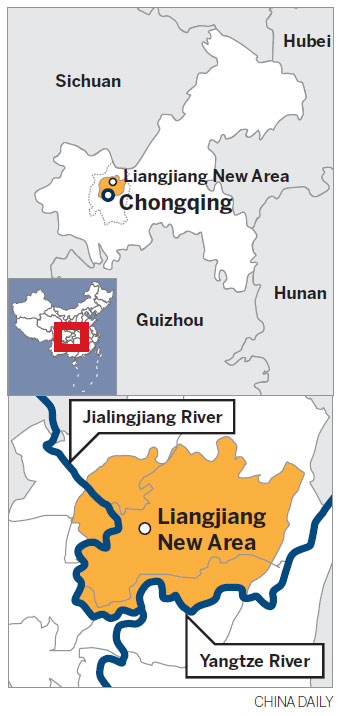
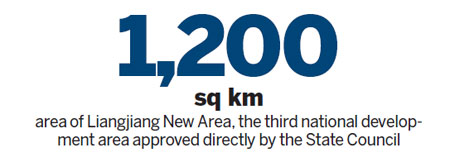
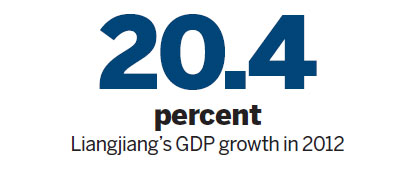
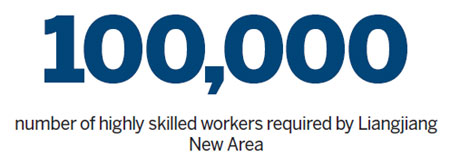


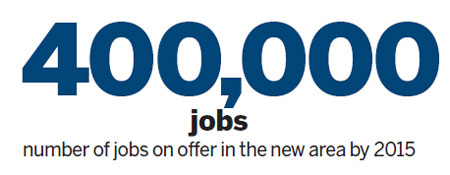
(China Daily 06/07/2013 page7)

 Michelle lays roses at site along Berlin Wall
Michelle lays roses at site along Berlin Wall
 Historic space lecture in Tiangong-1 commences
Historic space lecture in Tiangong-1 commences
 'Sopranos' Star James Gandolfini dead at 51
'Sopranos' Star James Gandolfini dead at 51
 UN: Number of refugees hits 18-year high
UN: Number of refugees hits 18-year high
 Slide: Jet exercises from aircraft carrier
Slide: Jet exercises from aircraft carrier
 Talks establish fishery hotline
Talks establish fishery hotline
 Foreign buyers eye Chinese drones
Foreign buyers eye Chinese drones
 UN chief hails China's peacekeepers
UN chief hails China's peacekeepers
Most Viewed
Editor's Picks

|

|

|

|

|

|
Today's Top News
Shenzhou X astronaut gives lecture today
US told to reassess duties on Chinese paper
Chinese seek greater share of satellite market
Russia rejects Obama's nuke cut proposal
US immigration bill sees Senate breakthrough
Brazilian cities revoke fare hikes
Moody's warns on China's local govt debt
Air quality in major cities drops in May
US Weekly

|

|
